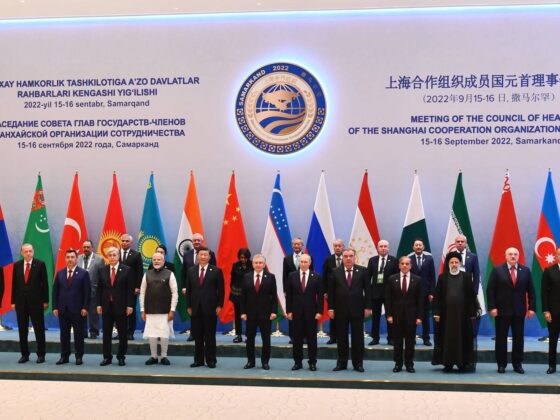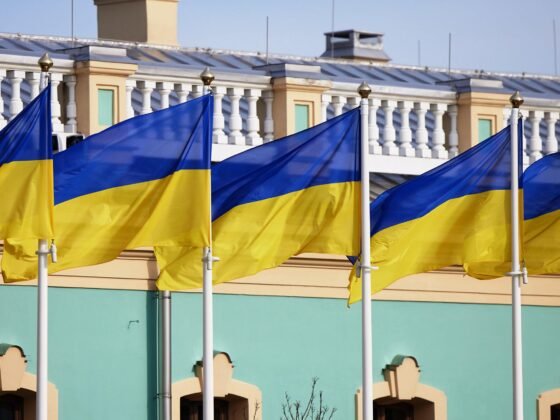PONARS Eurasia Commentary | Uzbekistan is undergoing its first constitutional reforms since Shavkat Mirziyoyev’s accession to power in 2016, marking another important change to its political structure. The president has proposed replacing the two-part system with a mixed-member parallel system to increase the role of political parties in governance. According to officials, the new electoral design will be a big step toward establishing a robust party system and reinforcing the leadership’s commitment to democratic reforms.
The new arrangement would allegedly allocate half of the parliamentary seats through first-past-the-post and the other half through party-list proportional representation (List-PR). Although components of the new system are still being devised, crucial issues need to be addressed so that the alteration process brings about genuine progress. Uzbekistan has always used a majoritarian formula-based two-part system to elect its national legislative chamber in all six parliamentary elections since 1991. Despite its relative simplicity for both election officials and voters, two-part systems remain fairly uncommon, with just 10 cases globally, half located in Africa. There is a global shift toward electoral designs that incorporate proportional formulas, with List-PR being used in more than a third of all countries.
Kazakhstan (2023) and Kyrgyzstan (2021) have come a long way in adopting mixed-member parallel systems after experimenting with List-PR. Uzbekistan’s Central Election Commission drafted an updated electoral design earlier, in the spring of 2020. However, the project was paused until the president could fully discuss it with representatives of the lower and upper chambers of parliament (Oliy Majlis). Mirziyoyev was re-elected to a second term in 2021, and the constitutional referendum and parliamentary approval were held in March-April of this year.
Reform Priorities
Although Tashkent’s constitutional amendments have been the main topic on the political agenda in recent months (including the length and number of presidential terms), changes to the electoral system deserve special attention. So far, only some aspects of the proposed design are known for certain. For instance, the distribution of seats is planned to be 50/50, with half of the parliamentarians elected through a first-past-the-post formula and the other half through List-PR. Here, I argue that a single countrywide constituency with a closed list, as well as fully implemented gender quotas, would be the most suitable set of electoral design rules for Uzbekistan. (For the most part, an optimal combination of components for a new electoral system can be identified based on international standards and academic research.)
First, to ensure a fairer distribution of seats, I propose maximizing the district magnitude, creating a single nationwide constituency, and implementing a closed list system. Kazakhstan and Kyrgyzstan used this system from 2012 to 2021 and 2007 to 2020, respectively. A single nationwide constituency means that parties will present lists of 75 candidates representing the whole country rather than a particular area: the latter is the function of the majoritarian part of the electoral system. Besides, this would help minimize the discrepancies resulting from dividing the territory into smaller voting districts and the following distribution of seats.
With the closed list system in place, voters would not have a direct influence on intra-party seat distribution because they vote for the pre-established party list rather than for individual candidates within them. Thus, parties would be more likely to organize their campaigns apart from their agenda on political, economic, and social issues. In order for this to work even better, parties should not be allowed to nominate the same candidate in both majoritarian and proportional segments. Otherwise, a single candidate can succeed at both halves, which leads to disproportionality; or he or she can get a mandate through a party list despite losing an individual race, thus undermining the integrity of election results.
Second, the new system should also maintain and refine the current 30-percent quota for women in politics, ensuring female candidates are placed in more competitive positions instead of being dumped at the bottom of the list. Replacement rules will come in handy in case parties try to substitute their elected female representatives with male counterparts afterward, although they fully comply with gender quotas in the nomination phase. In the best scenario, the above-mentioned electoral system components would collectively ensure a fairer number of seats of female MPs, in addition to the main official reform goal: greater party institutionalization.
Additional factors supporting parliamentary elections come to the fore when determining their implications. The most central factor is access to the ballot. On a positive note, even just the exploration of new electoral designs has opened doors for Uzbekistan’s civil society to explain to the government the benefits of liberalized ballot access.
A Taste of Convalescence
While steps taken by Mirziyoyev’s government toward liberalizing the political space have resulted in some optimism regarding the future of Uzbekistan, the pace of reforms has clearly slowed down. Even though the extent of free speech, religious freedom, and press freedom is incomparably better compared to the period of Islam Karimov’s rule, recent developments have caused reasonable alarm. The leadership has been reluctant to pursue democratic reforms in more (politically) high-cost areas like freedom of assembly and freedom to form associations. Despite Mirziyoyev’s claims of commitment to democratic reforms, we face his unmet promise in 2017 of introducing direct local elections, and the “field of play” continues to be totally occupied by pro-government actors.
Highly restrictive regulations on the formation of new political parties are also still unaddressed, such as the requirement of collecting at least 20,000 signatures to apply for registration. The recent statement by Minister of Justice Akbar Toshqulov illustrates that the government has not lost its phobia of political instability that countless parties would supposedly create. But it is overdue to remove at least some bureaucratic obstacles for new political groups to gain official status.
Optimism can be tempered because the de facto political power of elected representatives both at national and regional levels is substantially limited vis-à-vis the executive branch. The parliament has been serving as the regime’s rubber stamper, legitimizing its every decision. The final draft of constitutional amendments passed the legislative chamber without a single vote against it.
The situation in the regions is even more dismal, with local leaders or khokims acting as literal owners of their cities, districts, and provinces. A new version of the constitution seeks to remove the provision that allows khokims to be the head of the administration/executive, local councils (Kengashes of People’s Deputies), and the legislative branch of local government. According to a roundtable of governmental and non-governmental experts last year in Tashkent, one of the main ways to revitalize “local representative bodies” is for Kengashes to be improved and have stronger control over executive authorities.
One major hindrance is that salaries are low or non-existent. Only the secretariat of regional councils gets paid, while the overwhelming majority of representatives perform their duties on a voluntary basis. Not surprisingly, there are not many people eager to run for seats or municipal roles, except perhaps for some long-time public sector employees or businessmen with close ties to local administrators. Political parties most often select from a limited pool of available candidates and often settle for exceedingly incompetent types who do not mind serving unpaid.
Last but not least, the introduction of a new electoral system brings up the issue of independent candidates’ eligibility to run for national and regional legislatures. Independents were allowed to stand for elections back in 1999, receiving only about 6 percent of parliamentary seats. Currently, nominating candidates is the exclusive right of registered political parties, all of which have a pro-governmental orientation and have very little grassroots support. One of the most engaging initiatives of recent years—Initiative Budget—has demonstrated that the citizens of Uzbekistan are more than capable of uniting for a common cause and putting forward their own local leaders to obtain necessary votes. Although this change seems to run counter to the idea of party institutionalization, much greater contact between elected representatives and voters can be established, contributing to more accountability.
Conclusion
Formal elements—district magnitude, ballot structure, electoral threshold, and gender quotas—are the main concern for designing a new electoral system in Uzbekistan. As briefly shown above, there is a way to choose the optimal combination of these components. However, there is a high need for changing other regulatory rules that support elections, like liberalization of access to the ballot, eligibility of independent candidates to stand for elections, and professionalization and dominion of regional councils. Otherwise, the introduction of a new electoral design might become another example of just reforms-for-reform’s-sake, as we’ve seen before in Uzbekistan and the region.
Akrom Avezov is a PhD student at Nagoya University and a member of the Interdisciplinary Frontier Next Generation Researcher Program at the Tokai Higher Education and Research System, Japan.











